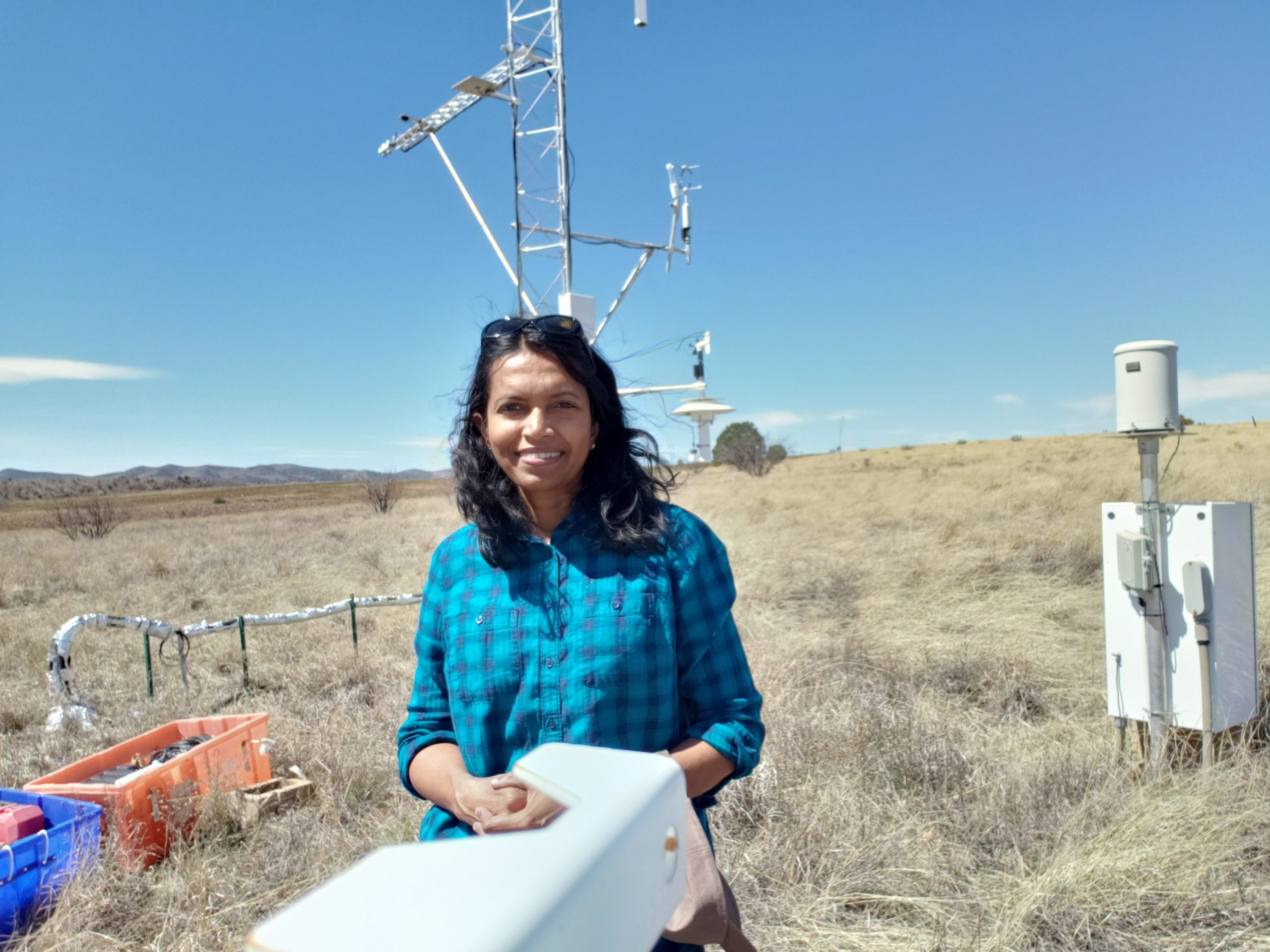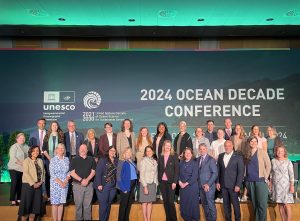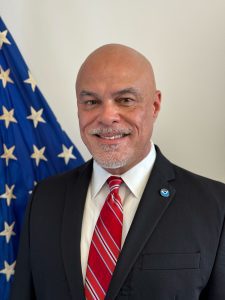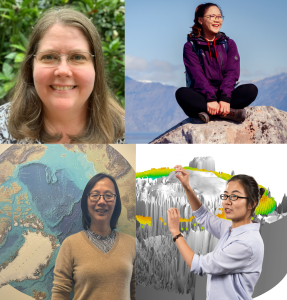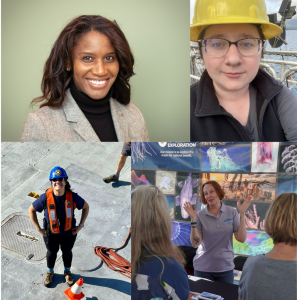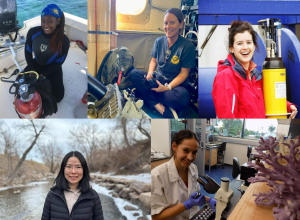Praveena Krishnan is an atmospheric scientist at the NOAA Air Resources Laboratory’s Atmospheric Turbulence and Diffusion Division (ATDD) in Oak Ridge, Tennessee. Her research is focused on understanding land–atmosphere interactions in the boundary layer, which is important for improving weather and climate models. One of her main responsibilities is to lead a National Science Foundation (NSF)-funded project that uses small aircraft and other instrumentation to measure carbon emissions at northern latitudes. Northern latitudes (i.e. the Arctic) are warming at twice the global average, meaning that the carbon stored in permafrost is increasingly vulnerable to melting, decomposition by microbes, and at risk of being released into the atmosphere. Measuring this change helps scientists improve regional and global scale models, in order to accurately predict the changes in the northern latitudes. This improved prediction ultimately helps local communities in the northern latitudes prepare for the future.
What drew you to your current career or field?
From a very young age, I was very curious about nature and how things work. I have realized my fascination for science and the intellectual challenges it provides. Even as a school girl, I aspired to be a scientist, and even though I didn’t have much idea about the research process at that time, I decided to follow my passion in science.
After completing a Master of Science in Physics, I was awarded a research fellowship by the Indian Space Research Organization, which allowed me to pursue research in any area in atmospheric science. I was drawn towards the study of structure and dynamics of boundary layer, the lowest layer of the atmosphere that acts as a buffer region between the biosphere and the free troposphere, and its vital importance for understanding weather and climate.
After my PhD, I joined the Biometeorology and Soil Physics Group of University of British Columbia in Vancouver, Canada as a postdoctoral fellow and carried out research on the effect of climate variability and disturbance on the water and carbon cycle of ecosystems. Then I moved to NOAA/ARL/ATDD in Oak Ridge after receiving the National Research Council (NRC) research associateship award from the National Academy of Sciences to pursue studies on the processes controlling the exchanges of energy, water vapor and carbon dioxide over various landcover types, and slowly transitioned to my current position as atmospheric scientist.
What were some of the challenges you faced this year? Have you been able to adapt and if so, how?
Due to the restrictions following the pandemic, we were not able to access the lab for several months, and it took time to establish a work-from-home environment with full potential. This affected research, access to experimental sites, and delayed experimental campaigns and projects. At the same, it gave us an opportunity to improve on how we respond to challenges and move forward.
The biggest challenge for me was to maintain a balance between professional and personal life. I’m still working on it! I am a very self-driven person and I love my job. But, as a mother of two kids, taking care of their needs, taking care of our home, and helping them to adapt to homeschooling while working full time was a big task. On a positive note, I could spend more time with my family.
After the initial setback, I found I could utilize the lack of commute and flexibility of work hours to my advantage. I rescheduled my working hours, and focused more on learning new techniques, planning data analysis, developing codes, reading literature, writing papers and proposals, reviewing papers and building collaborations. Even though I missed interactions in person, the virtual meeting option opened many doors and opportunities to interact with my colleagues and other researchers in our field. I could also publish and present my research work during this time. These challenges have certainly improved my time management skills, and expanded my potential to grow both personally and professionally.
What experience or advice helps you when you’re faced with setbacks?
I consider setbacks as part of life and as a learning experience. The research field is very challenging and we cannot expect perfection all the time. So, it is very important to treat both successes and failures equally. When I face a setback, I accept it, own responsibility, then ask the right questions on why it happened, and seek feedback or support if needed and learn from it.
This helps me come up with multiple options, plans and pathways the next time I am faced with challenges. The most important lesson is that the journey is very rewarding and it determines the destination. I believe that we can overcome any setbacks with perseverance, positive outlook and a never-give-up attitude.
What do you enjoy most about your work?
The aspects of my work that I love most are the challenge of solving problems, and the possibility of always learning new things and creative thinking involved in the research. I also enjoy the interdisciplinary aspect of my research field and the opportunities to work together with colleagues and collaborators.
What do you hope to accomplish in the future? What do you hope the future for women in science looks like?
I am looking forward to the upcoming Flux Observations of Carbon from an Airborne Laboratory (FOCAL) campaign in the Arctic. A better understanding of the drivers of carbon dioxide and methane sources and sinks is crucial for predicting future emissions from the Arctic in response to a changing climate, and its impact on global carbon cycle and radiative forcing. I hope to continue to advance current knowledge of biosphere-atmosphere coupling processes by integrating meteorological and surface flux observations, remote sensing data, boundary layer measurements and numerical models. I am also motivated to develop more interdisciplinary and collaborative studies on this research field and improve my leadership skills. I would like to inspire other women to take up a career in science.
I believe the future of women in science is very promising. I hope for a healthy and balanced environment for women to grow and prosper in the science fields so that there are more women at all career stages in science.
What advice would you give to women who are starting out in their careers?
I would tell them to pursue their dreams with passion, dedication, hard work and confidence. It’s very important to ask ourselves what we want, understand the challenges, set career goals and work towards achieving them. It’s also helpful to find a great research group or mentor to support and encourage them along the way. In my experience, the best way to take care of the future is to take care of the present by doing our best.
